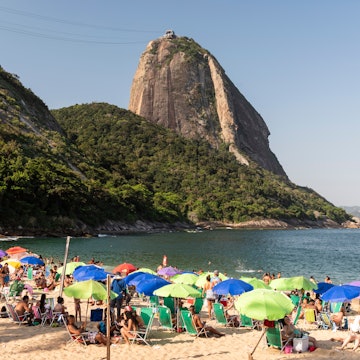

Brazil has different visa requirements for different nationalities. lazyllama/Shutterstock
Brazil is a vast country – the largest nation in South America, in fact – and it serves up a treasure trove of diverse travel experiences. Rainforests full of wildlife, sprawling wetlands, legendary beaches and some of the liveliest cities in the Americas all make for spectacular stops on your itinerary.
But before you go, you'll need to get your travel paperwork in order – an easy process for many nationalities. Here's what you need to know about the visa requirements for Brazil.

Do I need to get a visa before going to Brazil?
Brazil offers several different classes of visas depending on the purpose of travel and your country of origin, but the country’s visa system is largely based on reciprocity. If Brazilian citizens can travel to a country without a visa, citizens of that country can usually travel to Brazil without a visa as well.
In practice, this means that citizens of many countries can travel to Brazil for tourism and business visa-free. The list includes travelers from most nations in South America and Central America, some nations in Africa, the Middle East and Asia and citizens of the UK, New Zealand and the European Union (EU) and European Economic Area.
Visitors who don’t require visas can typically stay in Brazil for up to 90 days within any 12-month period (or within any 180-day period for some nationalities), though a few nationalities can only stay for 30 or 60 days. Travelers need to have a passport valid for at least six months with two blank pages at the time of travel.
Different rules apply for citizens of Australia, the USA and Canada, and these are covered later in this round-up. Japan has its own visa waiver agreement with Brazil, allowing its citizens to travel to Brazil visa-free for the purposes of tourism or business; this agreement is due to expire in September 2026, but it may be extended.
The Ministério das Relações Exteriores website has a downloadable list of the visa requirements for each country, but many visa agreements are only valid for a few years, so always check the latest information with the Brazilian diplomatic mission in your home country.

Which nations require an e-Visa?
A special visa agreement allowing citizens of Australia, Canada and the United States to travel to Brazil without a visa for tourism purposes is due to expire on 10 April 2025. After this date, citizens of these three nations will need to apply for an e-Visa valid for up to 90 days through a dedicated online visa portal before they travel.
The e-Visa scheme is valid for both tourism and business travel. There's a visa fee equivalent to US$80.90, and you'll need to fill in an online form and upload a passport photo.
What are the rules if I need a conventional visa for Brazil?
For citizens of countries not covered by reciprocal visa-free arrangements, e-Visas or visa waivers, the most common type of tourist visa is the VIVIS (Visitor Visa), which covers tourism and business travel. If you require a visa, applications must be completed online using Brazil’s E-consular platform; apply well in advance of your trip in case there are system problems or administrative delays.
VIVIS visas typically allow stays of up to 90 days, but contact the Brazilian diplomatic mission in your home country to confirm the requirements, fees, and visa duration for your nationality.
Traveling for business requires some additional paperwork, including a letter from the applicant’s employer on paper bearing the company letterhead detailing the applicant’s job, the purpose of the trip, the length of the trip and other details. Check your nearest consulate’s website for a full list of requirements.
Visas for working are known as VITEM visas, and they allow visa holders to work and study in Brazil. Applications usually require the involvement of the sponsoring employer or educational establishment and you must register with the local immigration authorities after 90 days in the country. Your local Brazilian diplomatic mission can advise on the requirements and permitted duration of stay.

What happens if I'm entering Brazil overland?
Many travelers visit Brazil as part of a longer overland trip through South America, particularly those making the journey to Iguaçu (Iguazú) Falls, which spans the border between Brazil and Argentina. Visas and e-Visas typically allow multiple entries to Brazil, and visa-free travelers can re-enter so long as the total number of days spent in Brazil does not exceed the permitted limit.
Can I extend my visa for Brazil?
Visa extensions aren’t automatically available for every country – check with your local Brazilian diplomatic mission to confirm the rules for your nationality. If an extension is available to you, it will be granted by Brazil's Polícia Federal, which has offices in larger cities and border towns in Brazil. Visa extensions of up to 90 days are granted for certain nationalities, but note that your total stay still can’t exceed 180 days within a 12-month period.
Do I need a yellow fever vaccine to enter Brazil?
Brazil doesn’t offically require visitors to show proof of a yellow fever vaccination to enter the country, but medics strongly recommend getting the vaccine if you are headed to areas of Brazil where there is a risk of yellow fever, including the states of Acre, Amapá, Amazonas, Distrito Federal, Goiás, Maranhão, Mato Grosso, Mato Grosso do Sul, Minas Gerais, Pará, Rondonia, Roraima and Tocantins. You may also need to show proof of vaccination against yellow fever if you visit other countries after visiting Brazil.














